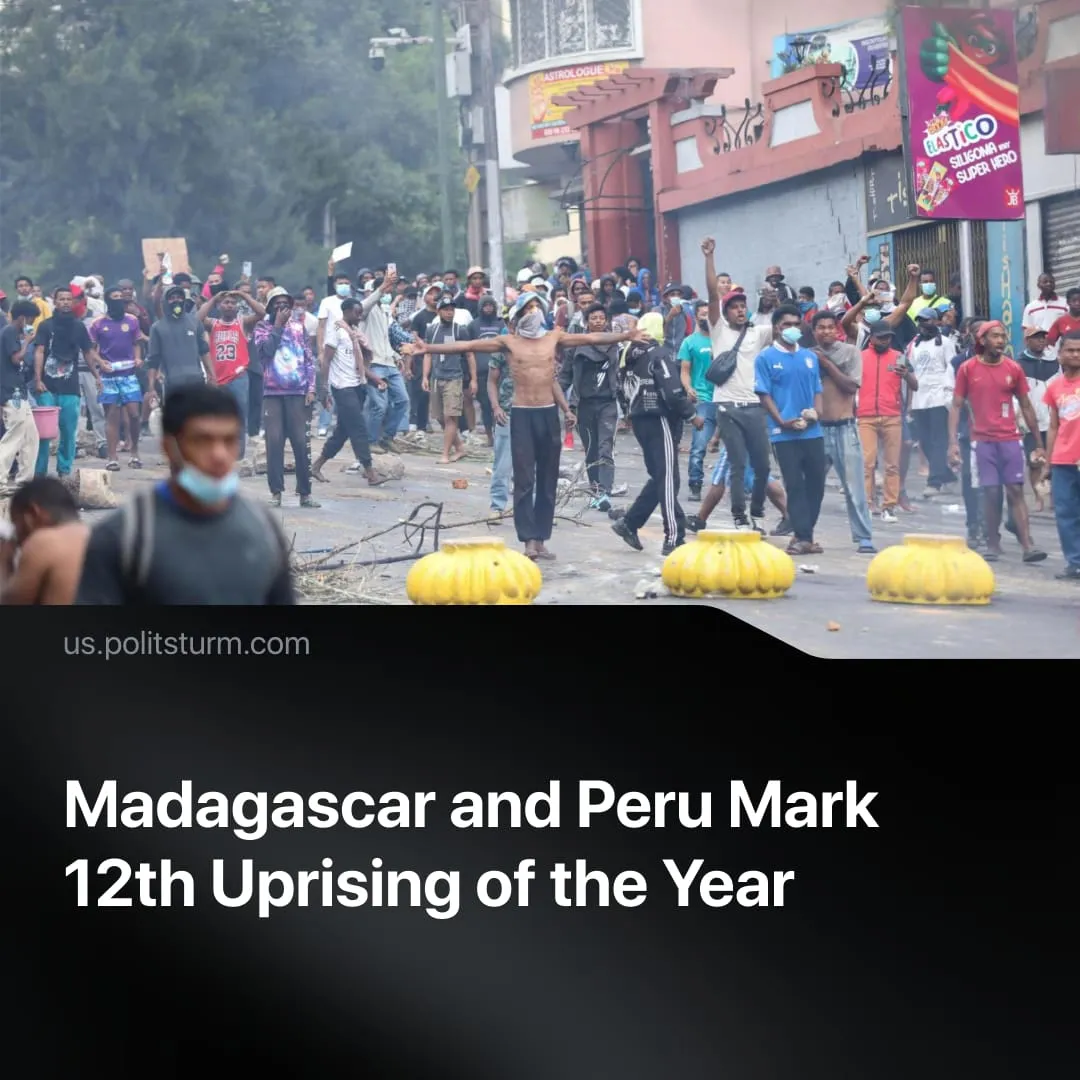The protests in Madagascar and Peru mark the 12th national uprisings of the year. Two years ago, there were only four.
Details. Since September, youth-led uprisings have erupted in Madagascar and Peru amid this year’s global wave of “Gen Z” protests.
► In Madagascar, the urban poor rioted over chronic blackouts and water shortages. President Rajoelina’s government was blamed for corruption and luxury amid mass deprivation, and protesters demanded his resignation.
► A military coup followed, with an army Colonel seizing power “in the name of the people”. The new military dictator promised reform but quickly appointed a capitalist prime minister tied to the World Bank. Elections due within 60 days were postponed for two years.
► In Peru, strikes over pension reform escalated into mass unrest over corruption and crime – forcing the removal of President Boluarte. Lawmakers then installed José Jerí – a right-wing businessman and the 7th president in 8 years – prompting the slogan “everyone must go!” amid a record 89% disapproval of Congress.
Context. There has been a notable increase in unrest worldwide, particularly among younger generations. Peru and Madagascar follow this year’s so-called “Gen Z” revolts inspired by the Nepal uprising. Similar mass protests have erupted across several regions – such as Serbia, Turkey, and Bangladesh – with the total number of 2025 uprisings already exceeding three times that of 2023.
► While the immediate causes differ, the underlying driver is the same: declining living standards. In both countries, around 70% face poverty, with Peru’s vulnerability worsening to a 20-year high and Madagascar’s real income in long-term decline.
► Despite the global capitalist crisis driving unrest, each country’s conditions shape the form it takes. In Peru, anger over crime and insecurity has merged with deeper frustration at corruption and political paralysis, symbolised by Fujimori’s congressional bloc blocking reform. In Madagascar, the struggle is more immediate — driven by lack of water and power, where workers claim to fight simply to “survive”. Yet the protests have taken a political edge, denouncing French imperialism and branding the ousted President Rajoelina a comprador.
Important to Know. The global rise in protests reflects the deepening general crisis of capitalism. Yet in every uprising, the absence of a leading Communist Party leaves the working class without direction. Protesters’ demands remain limited, and even where governments fall, the movement lacks a revolutionary programme for what comes next.
► In such situations, various representatives of the capitalist class exploit the power vacuum to restore authority and maintain the existing class structure. In Madagascar, the Facebook group leading the protests warned that their “revolution” risked being “hijacked” by the Colonel’s troops. In Nepal, the army intervened to “stabilise” the unrest and peacefully transfer power from the old Prime Minister to a new one. In Morocco, the monarchy and capitalists pacified the masses through concessions, promising $15 billion in social spending.
► By contrast, during the revolutionary crisis in Russia, the Bolsheviks provided clear leadership with a revolutionary programme to abolish capitalism and build socialism – a concrete plan to transform the workers’ existence. Through disciplined organisation, they directed the soviets to seize state power, defeated counterrevolutionary generals such as Kornilov, and secured power firmly in the hands of the working class.


